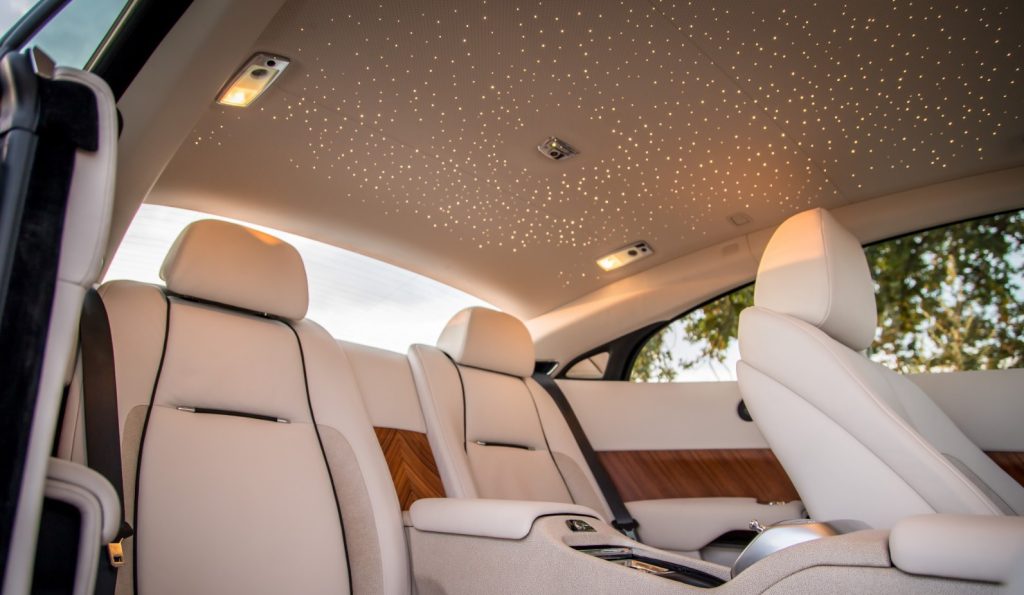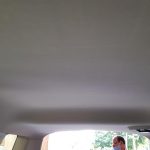The unsightly sagging headliner in your car can be a real eyesore, but fear not! We’re about to embark on a detailed journey that not only explores the reasons behind this common issue but also equips you with the knowledge and step-by-step instructions to restore your car’s interior to its former glory. So, buckle up as we delve into the intricacies of headliner sagging and unveil the secrets to a successful DIY fix.
Understanding the Headliner Woes
Age-Related Wear and Tear: One of the primary culprits behind a sagging headliner is the inevitable wear and tear that comes with the passage of time. The adhesive that initially held the headliner fabric in place may gradually weaken, causing the fabric to lose its tension and sag.
Adhesive Failure: Sometimes, it’s not just about the ticking clock; it’s about the quality of the adhesive used during the car’s manufacturing process. If the adhesive breaks down or loses its efficacy prematurely, it can lead to an early onset of headliner detachment.
Humidity and Temperature Changes: Environmental factors play a significant role in headliner sagging. High humidity levels can weaken the adhesive, and drastic temperature fluctuations can exacerbate the problem, making it crucial to consider the climate in which your car spends its time.
Inferior Materials: Quality matters, and the materials used in your car’s interior can significantly impact its longevity. Some cars may experience sagging headliner issues due to the use of subpar materials during manufacturing, emphasizing the importance of understanding your vehicle’s construction.
Gathering Your Tools and Materials
1. Cleaning Supplies:
A pristine fix starts with a clean canvas. Use a suitable upholstery cleaner and a soft brush to rid the headliner of dust, debris, and any loose particles that might compromise the effectiveness of the adhesive.
2. Safety Gear:
Before you dive into the fix, prioritize your safety. Equip yourself with gloves and safety glasses to shield against potential skin irritation and eye contact with adhesives.
3. Adhesive and Sealant:
Not all adhesives are created equal, and choosing the right one is crucial. Opt for an automotive-grade adhesive designed specifically for headliners. Additionally, consider using a high-quality sealant for an added layer of protection.
4. Removal Tools:
Gently does it. A trim removal kit will prove invaluable in carefully detaching the headliner without causing additional damage. Patience is key during this step.
Step-by-Step Fixing Process
1. Preparation is Key
Cleaning isn’t just about aesthetics; it’s a crucial step for a successful fix. Remove any loose particles, ensuring a smooth surface for the adhesive to bond. Take your time with this step, as a thorough cleaning sets the stage for a lasting fix.
2. Removing the Headliner
Exercise patience as you detach the headliner. Refer to your car’s manual if needed, and be cautious to avoid tearing or damaging the fabric during removal. If you encounter resistance, pause and reassess – forcing it might lead to more significant issues.
3. Inspecting for Damage
A keen eye is your best ally during this step. Identify weak points or tears in the headliner fabric, as addressing these areas specifically will result in a more robust fix. Consider whether patching up small tears or opting for a complete replacement is the best course of action.
4. Selecting the Right Adhesive
Not all adhesives are created equal, and choosing the right one is paramount. Look for an adhesive that not only bonds effectively but is also compatible with your car’s interior materials. If you’re unsure, seek advice from auto supply professionals. (See Also: Can You Use Any Fabric for Headliner? Tips for Choosing the Best Headliner Fabric)
5. Applying the Adhesive
Precision is key during the application process. Follow the product instructions diligently, applying the adhesive evenly to both the headliner fabric and the car’s roof. Consider the consistency of the adhesive – too thin or too thick may affect the overall result.
6. Reattaching the Headliner
Take your time aligning and reattaching the headliner. Apply even pressure across the entire surface to ensure a uniform bond. Pay special attention to corners and edges, as these areas are prone to sagging if not adequately secured.
7. Allowing for Drying Time
Resist the urge to speed up the drying process. Give the adhesive ample time to set and cure, ideally following the manufacturer’s recommended drying time. Rushing this step may compromise the effectiveness of the fix.
Tips for a Lasting Fix
- Temperature Matters: Perform the fix in moderate temperatures, avoiding extreme heat or cold. This ensures optimal adhesive performance. If possible, choose a day with mild weather to undertake the repair.
- Even Pressure: Throughout the reattachment process, maintain consistent pressure. This prevents sagging in specific areas and promotes a uniform bond. Take breaks if needed, ensuring you’re applying pressure evenly across the entire headliner.
- Professional Assistance: When in doubt, seek professional advice or assistance. A second opinion from a car interior specialist can provide valuable insights and ensure a lasting fix. Some automotive repair shops offer headliner restoration services if you prefer a professional touch.
Additional Considerations
1. Fabric Repair or Replacement:
Depending on the severity of the headliner’s condition, you might need to consider fabric repair or replacement. Patching up small tears or opting for a complete replacement can enhance the overall aesthetic. Evaluate the extent of the damage before deciding on the most suitable course of action.
2. Addressing Structural Issues:
A sagging headliner might be indicative of underlying structural problems. Take this opportunity to inspect the roof structure for any signs of damage or corrosion that could exacerbate the issue. Addressing these structural issues simultaneously ensures a more comprehensive and lasting fix.
3. Preventive Maintenance:
Once you’ve successfully fixed the sagging headliner, consider preventive measures to prolong its life. Regularly cleaning and conditioning the interior can prevent future issues. Additionally, parking your car in shaded areas and using sunshades during hot days can mitigate the impact of environmental factors on the headliner.
Expert Tips for a Flawless Headliner Fix
As you embark on the journey of fixing your car’s sagging headliner, arm yourself with expert tips to ensure a flawless restoration. These insights go beyond the basics, offering you a comprehensive guide for a lasting and visually appealing solution.
1. Choose the Right Adhesive Wisely
Not all adhesives are created equal. Opt for an adhesive specifically designed for automotive headliners. Consider factors such as compatibility with your car’s interior materials, ease of application, and long-term bonding strength.
2. Mind the Temperature
Perform the fix in moderate temperatures. Extreme heat or cold can impact adhesive performance. Aim for a Goldilocks zone to ensure the adhesive sets and cures optimally, providing a robust and durable bond.
3. Prioritize Even Pressure
During the reattachment process, apply even pressure across the entire headliner surface. Pay special attention to corners and edges, ensuring a uniform bond. Taking the time for precise reattachment prevents future sagging in specific areas.
4. Inspect and Address Structural Issues
While fixing the headliner, take a moment to inspect the car’s roof structure for signs of damage or corrosion. Addressing these underlying structural issues ensures a more comprehensive and lasting solution to the sagging problem. (See Also: What to Put Under Car Seat to Protect Leather? Protect Your Car’s Leather Seats)
5. Consider Fabric Repair or Replacement
Evaluate the condition of the headliner fabric. For small tears, consider fabric repair. In cases of extensive damage, opting for a complete fabric replacement can enhance both the aesthetic and longevity of the fix.
6. Implement Preventive Maintenance Measures
Once the headliner is fixed, adopt preventive measures. Regularly clean and condition the car’s interior to extend the life of the headliner. Parking in shaded areas and using sunshades during hot days can also mitigate environmental impact.
7. Seek Professional Advice if Unsure
If uncertain about any aspect of the fix, don’t hesitate to seek professional advice. Automotive repair shops and interior specialists can provide valuable insights, ensuring a successful and trouble-free headliner restoration.
8. Patience is a Virtue
Rome wasn’t built in a day, and a flawless headliner fix takes time. Be patient during each step of the process, from cleaning to reattachment to drying. Rushing can compromise the effectiveness of the adhesive and the overall quality of the repair.
9. Test Adhesive Compatibility
Before applying the adhesive to the entire headliner, perform a small test in an inconspicuous area. This ensures the adhesive is compatible with the fabric and won’t cause discoloration or damage.
10. Document the Process
Take photos or notes throughout the fixing process. Documentation can be valuable for reference in case of future issues or if you decide to seek professional help. A record of the steps taken aids in troubleshooting and provides insights for potential improvements.
Implementing these expert tips alongside the step-by-step guide ensures not only a successful headliner fix but also empowers you with the knowledge to maintain your car’s interior in top-notch condition. Happy restoring!
FAQs: Mastering the Art of Fixing a Sagging Car Headliner
Embarking on the journey of fixing a sagging car headliner can be both exciting and challenging. To ensure you have all the information you need, we’ve put together a list of frequently asked questions to guide you through the process. From understanding the causes of headliner sagging to choosing the right adhesive and dealing with unexpected challenges, these answers are designed to equip you with the knowledge for a smooth and successful restoration.
1. What Causes a Car Headliner to Sag?
Answer: A sagging headliner can be attributed to various factors, including age-related wear and tear, adhesive failure, exposure to high humidity, temperature changes, or the use of inferior materials during the manufacturing process. Understanding the specific cause in your case can aid in implementing an effective fix.
2. Is it Possible to Fix a Sagging Headliner at Home?
Answer: Absolutely. Fixing a sagging headliner is a manageable do-it-yourself (DIY) task. With the right tools, materials, and a bit of patience, you can successfully restore your car’s interior without the need for professional assistance.
3. How Do I Choose the Right Adhesive for the Headliner Fix?
Answer: When selecting adhesive, choose one explicitly designed for automotive headliners. Consider factors such as compatibility with your car’s interior materials, ease of application, and long-term bonding strength. Checking customer reviews or seeking advice from auto supply professionals can help in making an informed decision.
4. Can I Perform the Fix in Extreme Temperatures?
Answer: It’s advisable to perform the fix in moderate temperatures. Extreme heat or cold can impact adhesive performance. Aim for a climate that allows the adhesive to set and cure optimally, ensuring the overall quality of the repair. (See Also: How to Keep Car Seat Covers in Place: Tips for a Secure and Stylish Interior)
5. What Should I Do If I Encounter Resistance When Removing the Headliner?
Answer: If you encounter resistance during headliner removal, exercise caution. Forcing it may lead to additional damage. Consult your car’s manual for guidance or seek professional advice if needed. Taking your time during this step is crucial to avoid complications.
6. How Long Should I Allow the Adhesive to Dry?
Answer: Follow the manufacturer’s recommended drying time for the adhesive. Patience is key at this stage. Rushing the drying process can compromise the effectiveness of the fix, resulting in a less durable bond.
7. Should I Consider Fabric Repair or Replacement?
Answer: The decision between fabric repair and replacement depends on the extent of the damage. Small tears may be effectively patched up, while extensive damage might necessitate complete fabric replacement. Evaluate the condition of the headliner to make the most suitable choice.
8. What Preventive Measures Can I Take After Fixing the Headliner?
Answer: After fixing the headliner, adopt preventive measures to prolong its life. Regularly clean and condition the car’s interior, paying attention to the headliner. Parking in shaded areas and using sunshades during hot days can help mitigate the impact of environmental factors.
9. Is Professional Assistance Necessary for Headliner Fixes?
Answer: While fixing a sagging headliner is a DIY task, seeking professional advice or assistance is recommended if you’re uncertain about any aspect of the process. Automotive repair shops and specialists can provide valuable insights and ensure a successful restoration.
10. What Should I Do If the Headliner Sags Again After Fixing?
Answer: If the headliner sags again, revisit the steps of the fix and inspect for any new damage. Consider seeking professional assistance to identify and address underlying issues that might be contributing to the recurrence.
Navigating the headliner fix journey is accompanied by questions, and these FAQs aim to provide comprehensive answers to ensure a successful and trouble-free restoration. Happy fixing!
Conclusion
Embarking on the journey to fix a sagging headliner in your car is not just about restoring appearances; it’s about preserving the integrity of your vehicle’s interior. Armed with knowledge, the right tools, and a bit of patience, you can navigate this DIY task with confidence. Revel in the satisfaction of a rejuvenated car interior and a driving experience free from the distraction of a sagging headliner. Remember, taking the time to understand the underlying causes and executing a meticulous fix ensures not only immediate results but also a lasting solution to this common automotive woe. Happy fixing!



